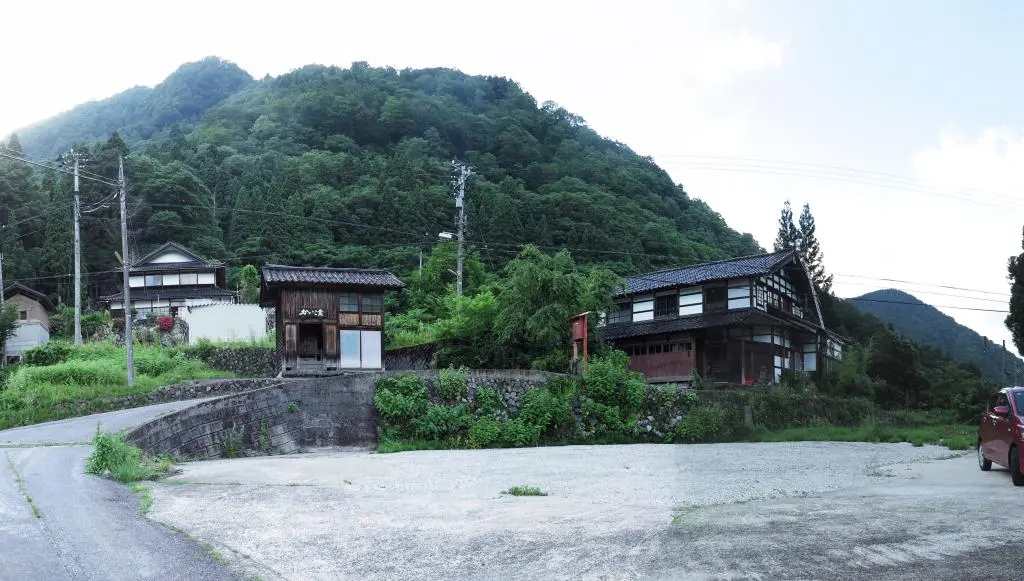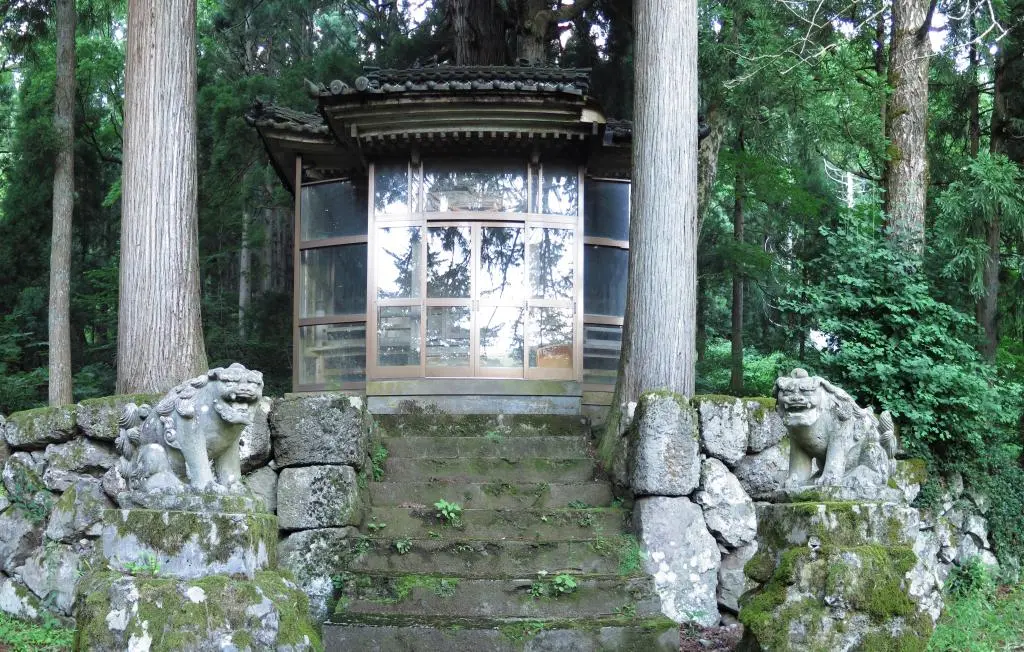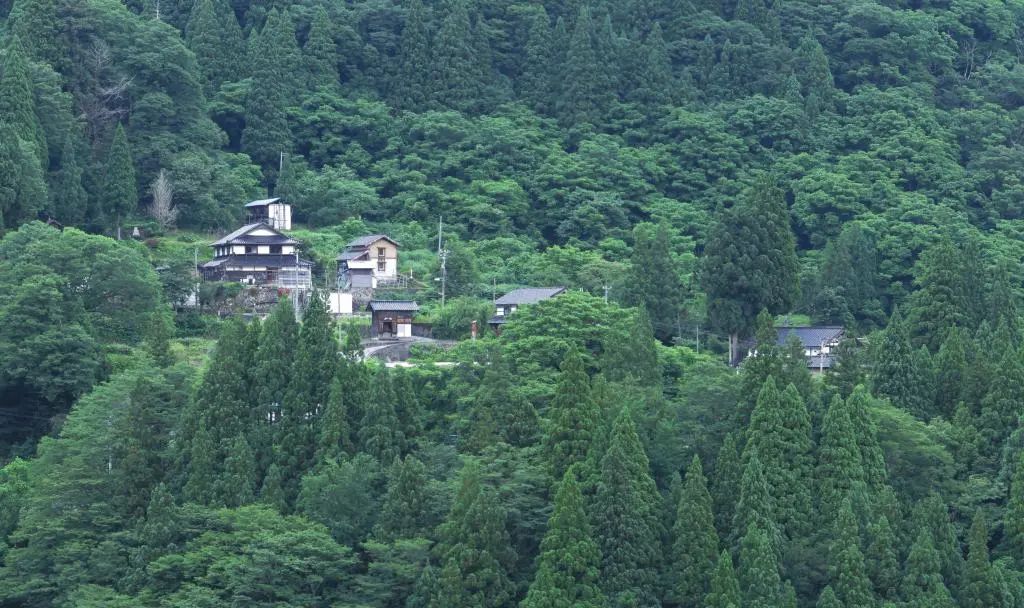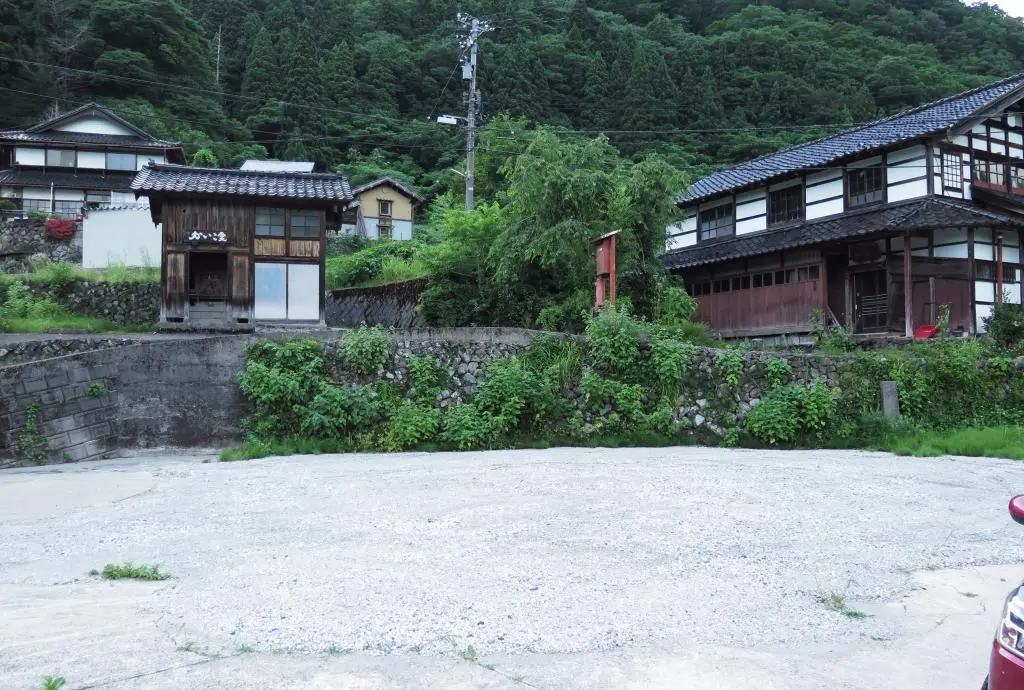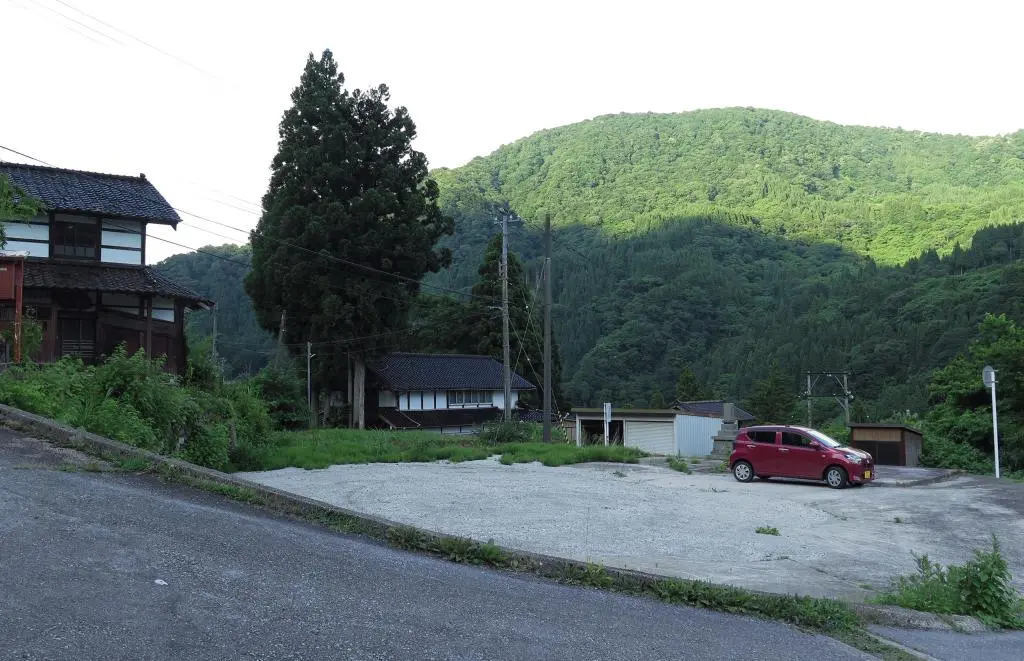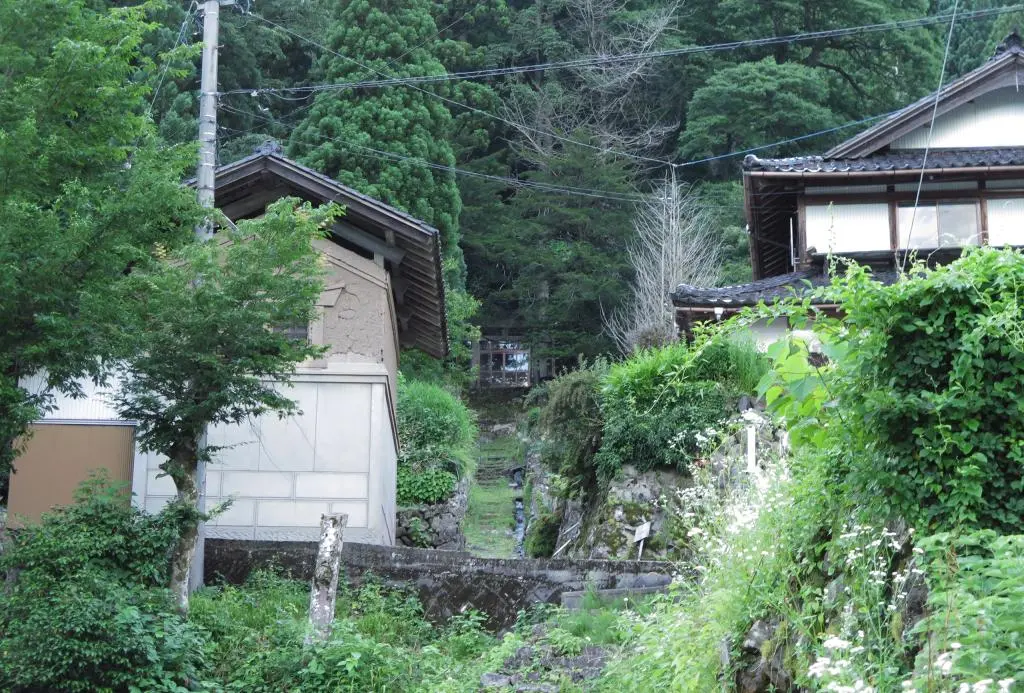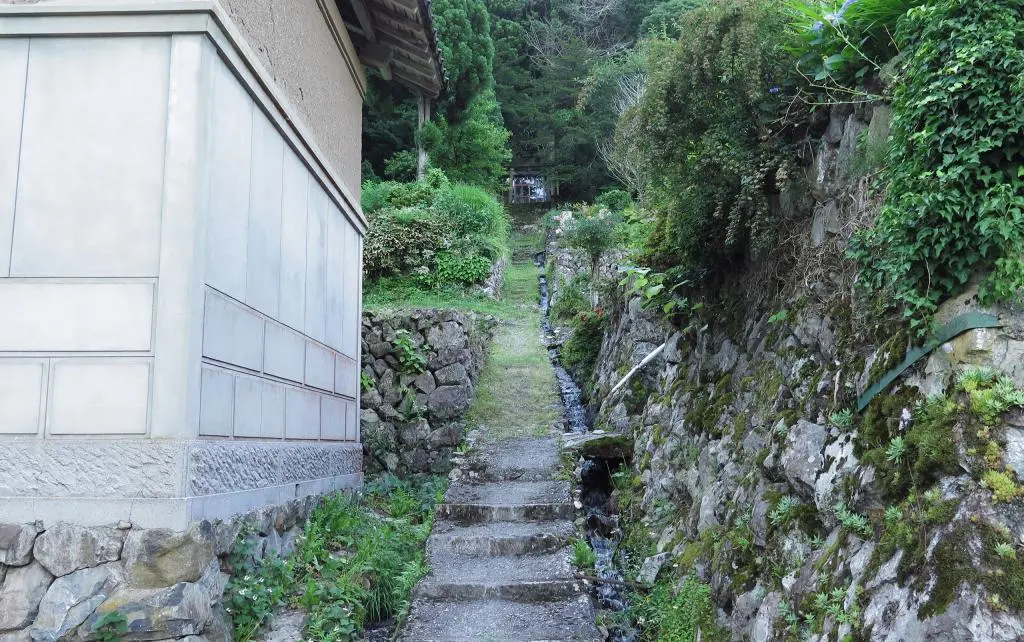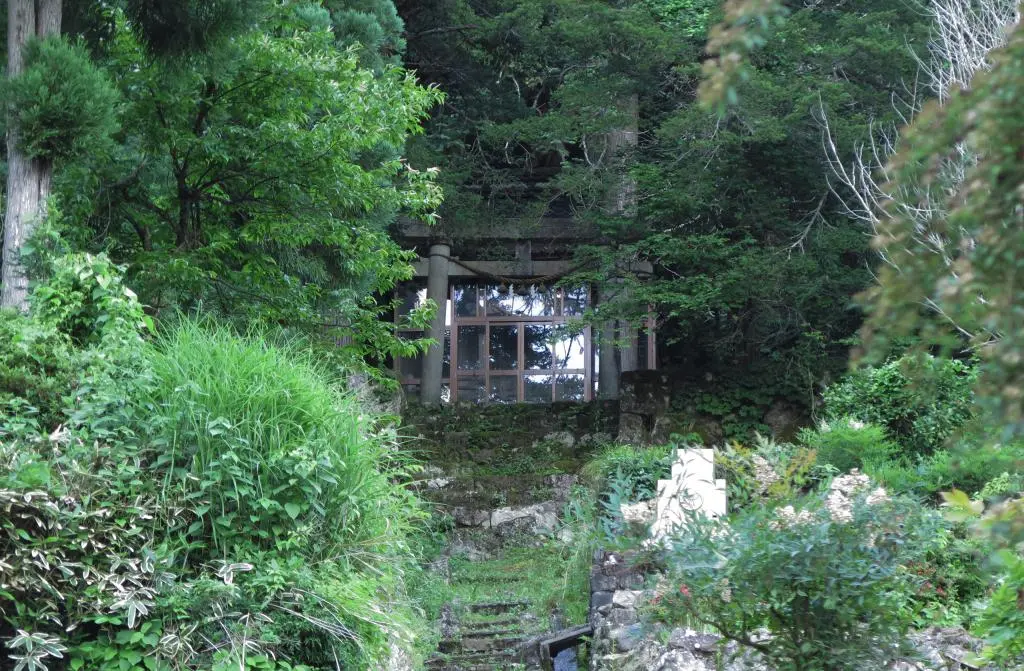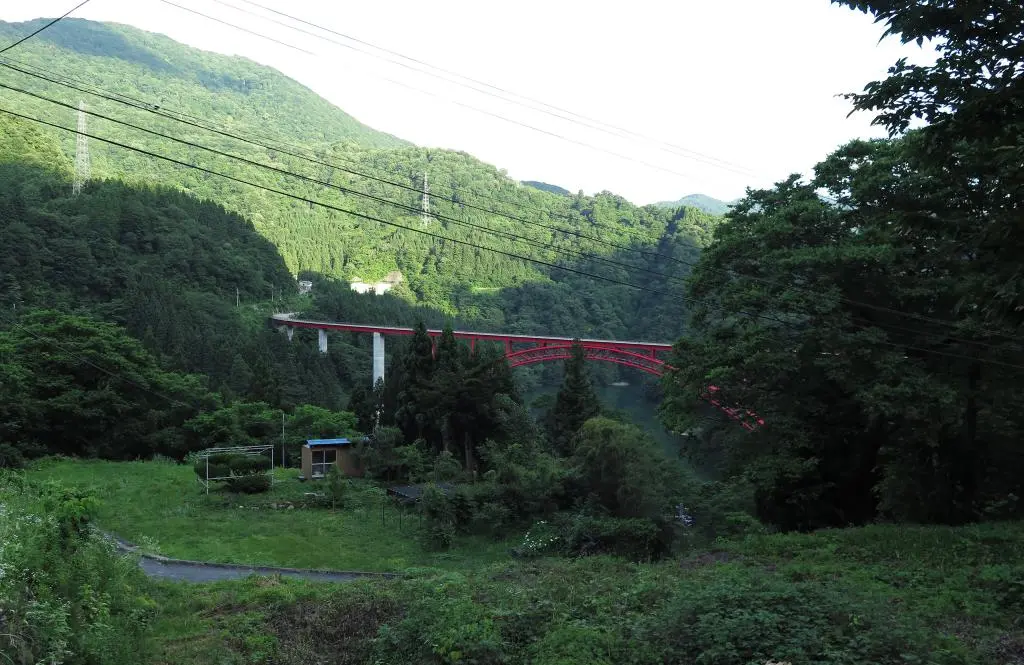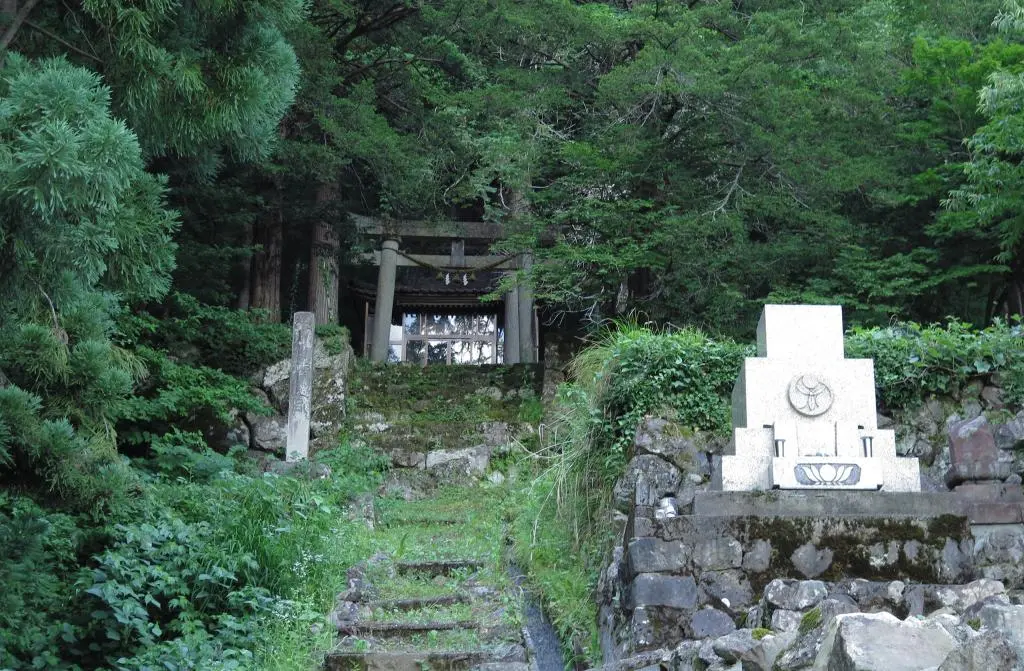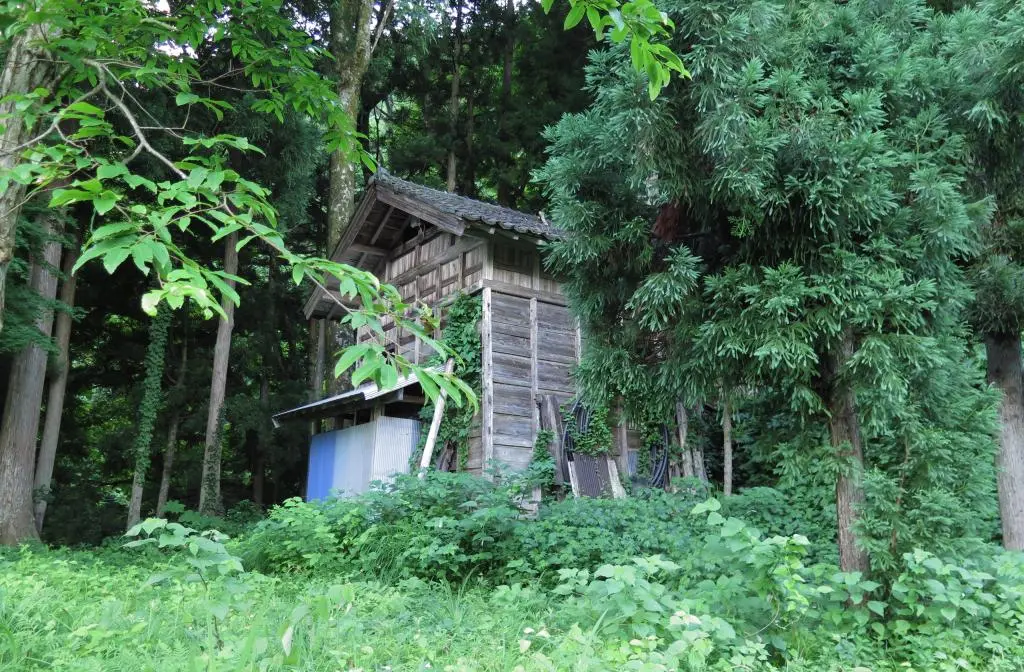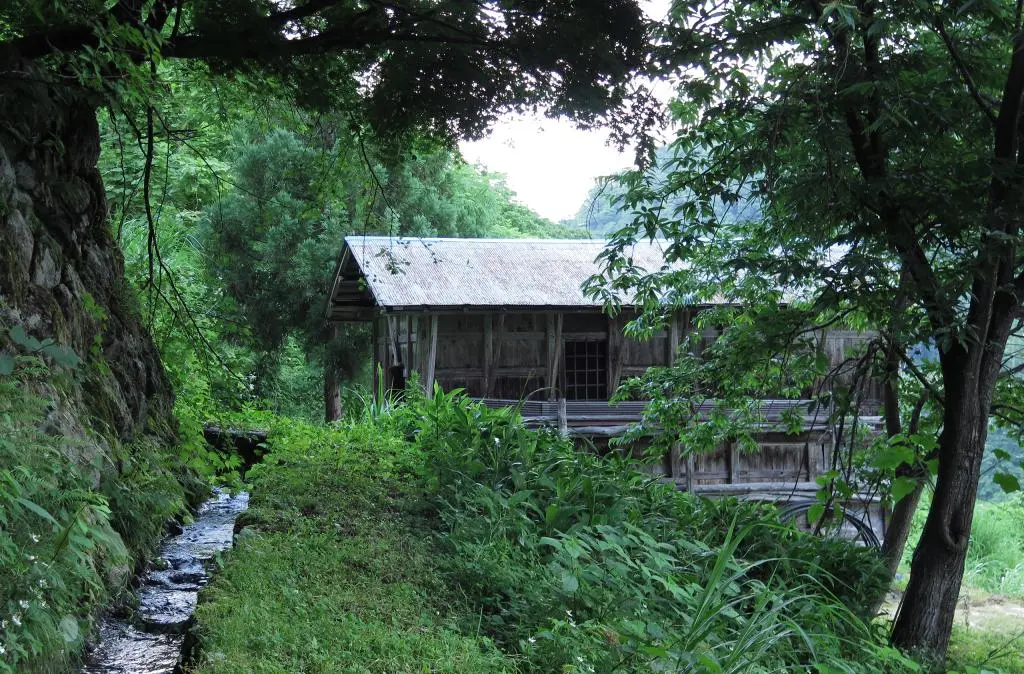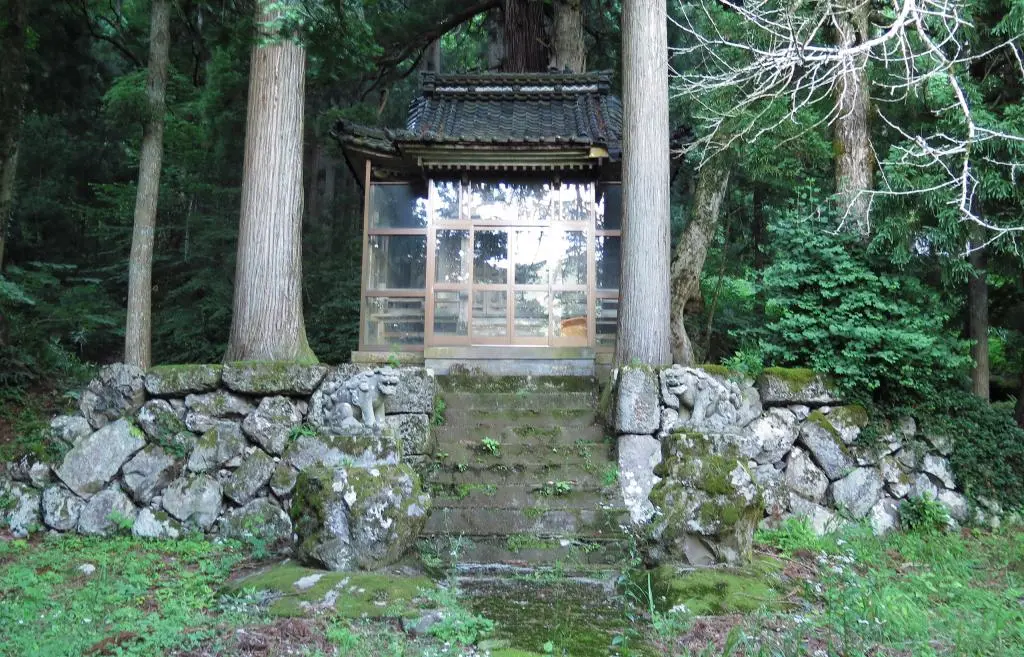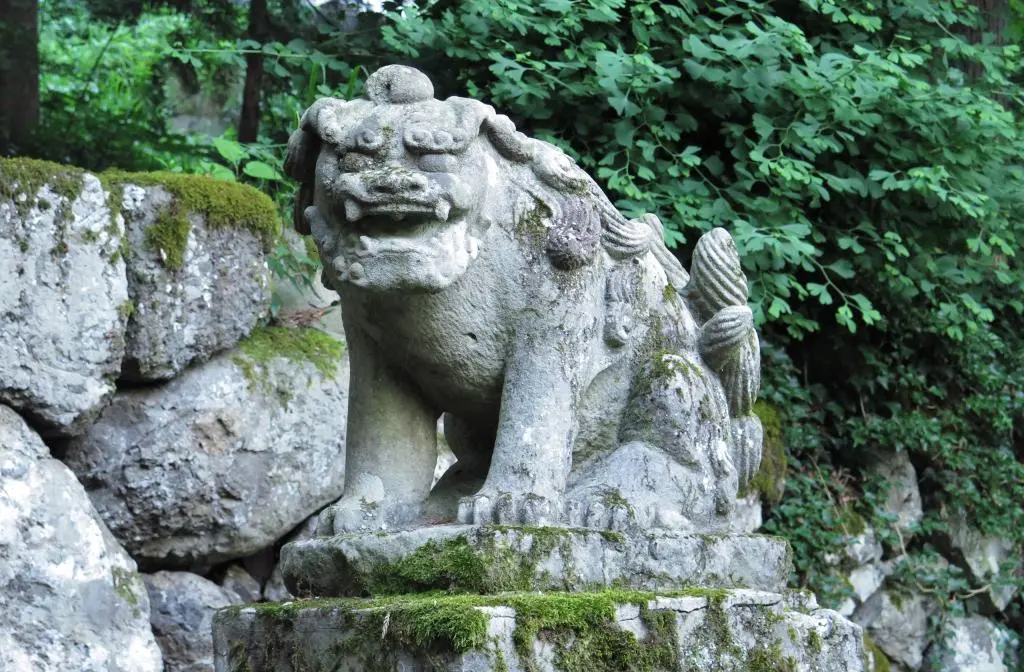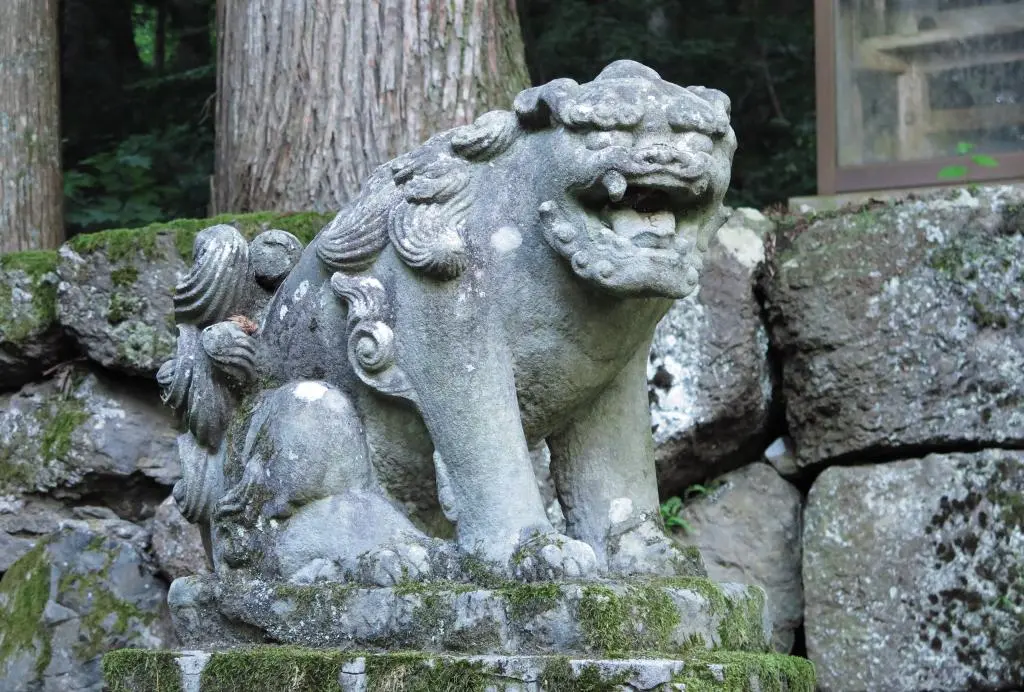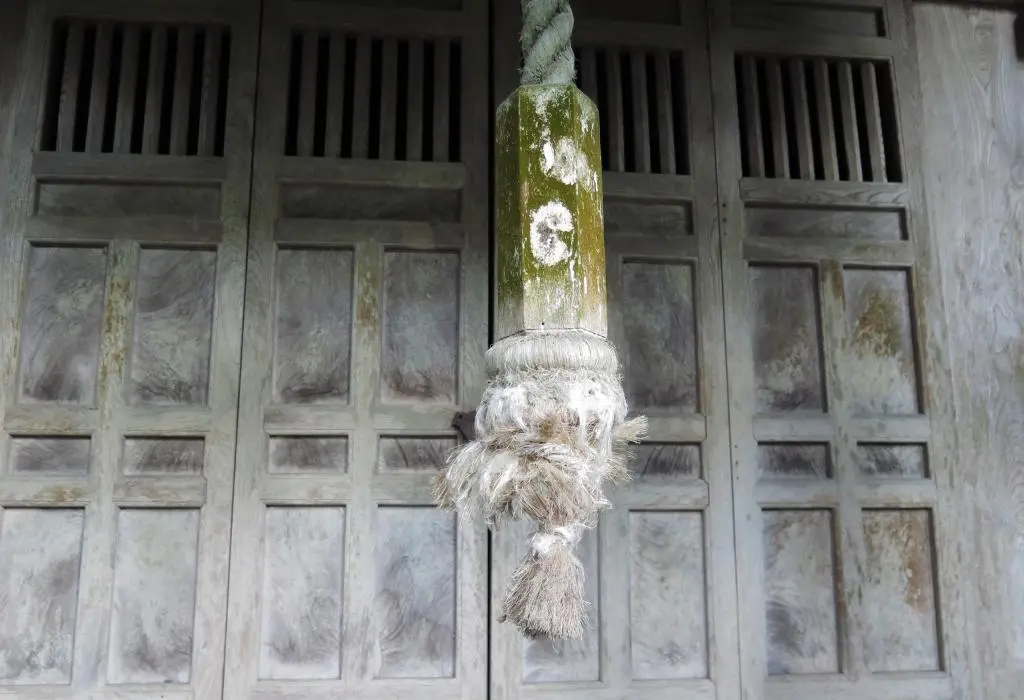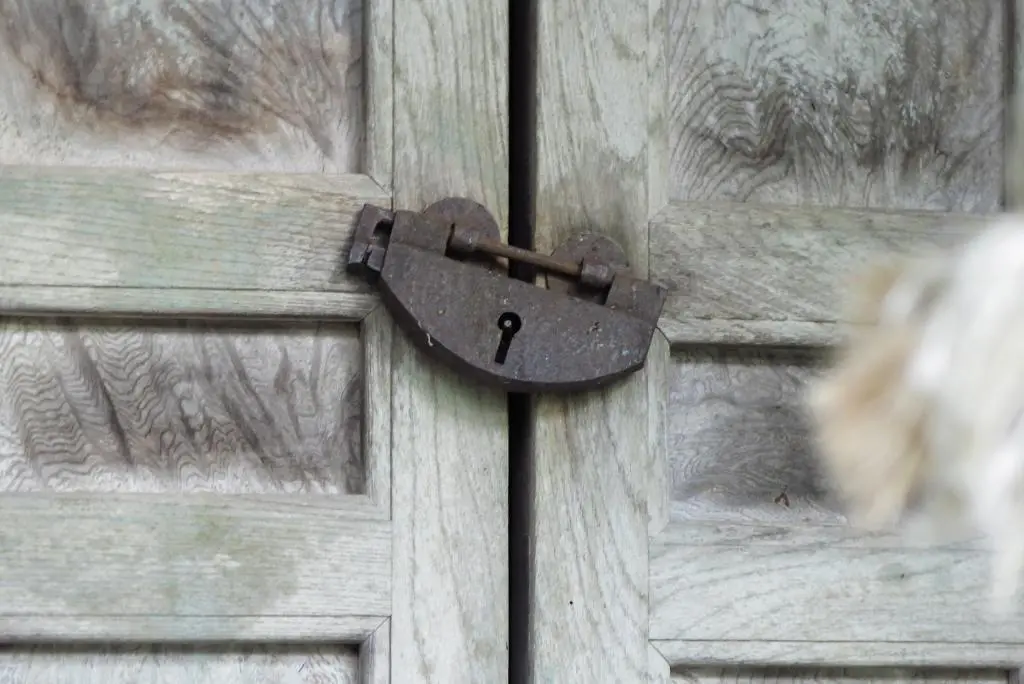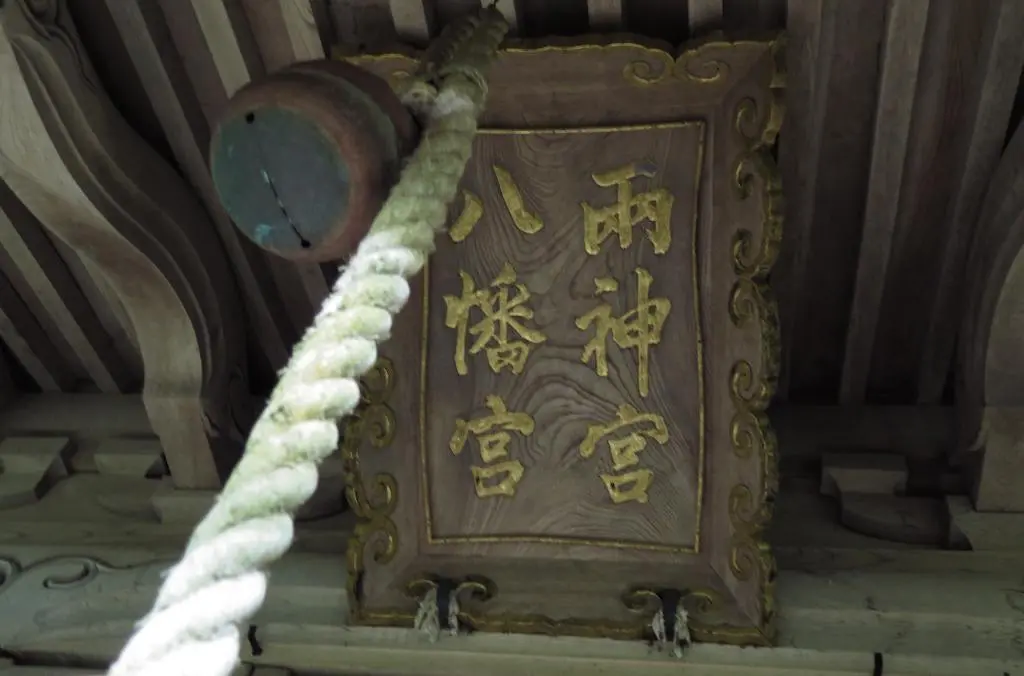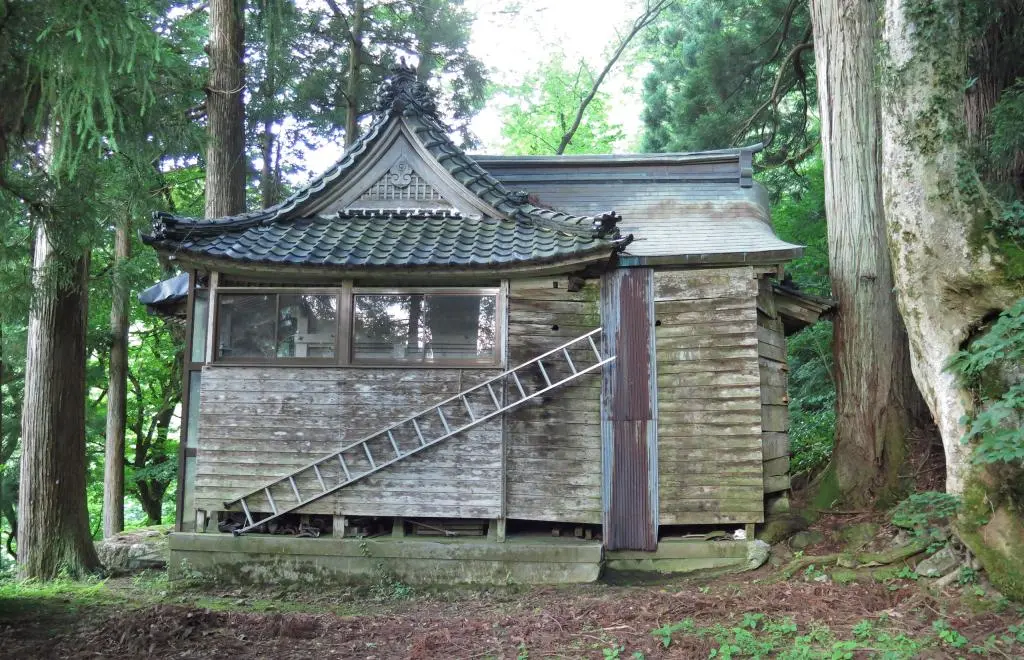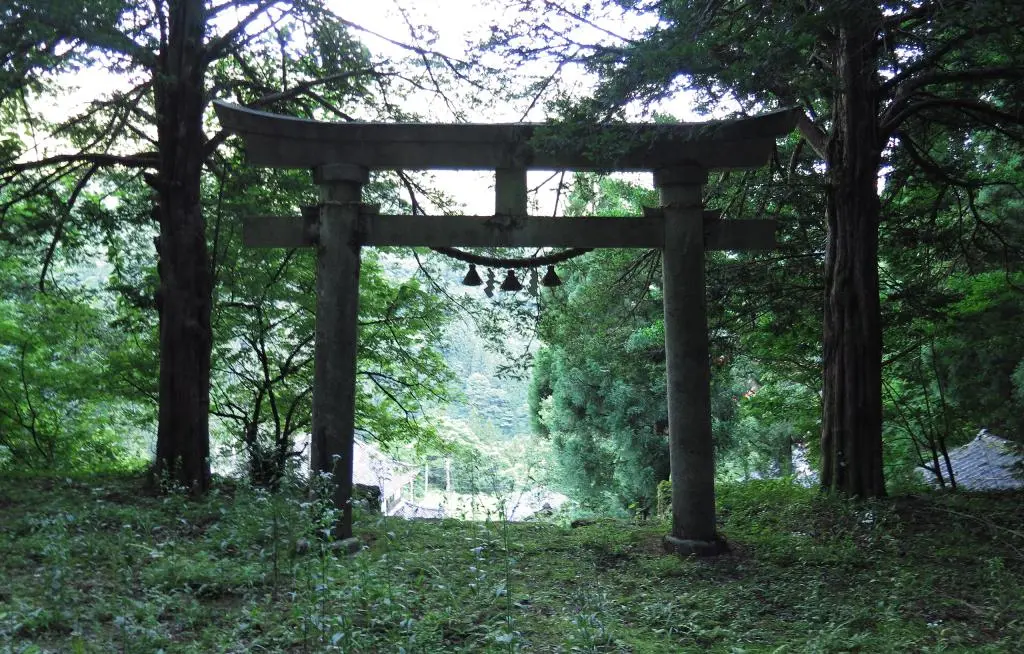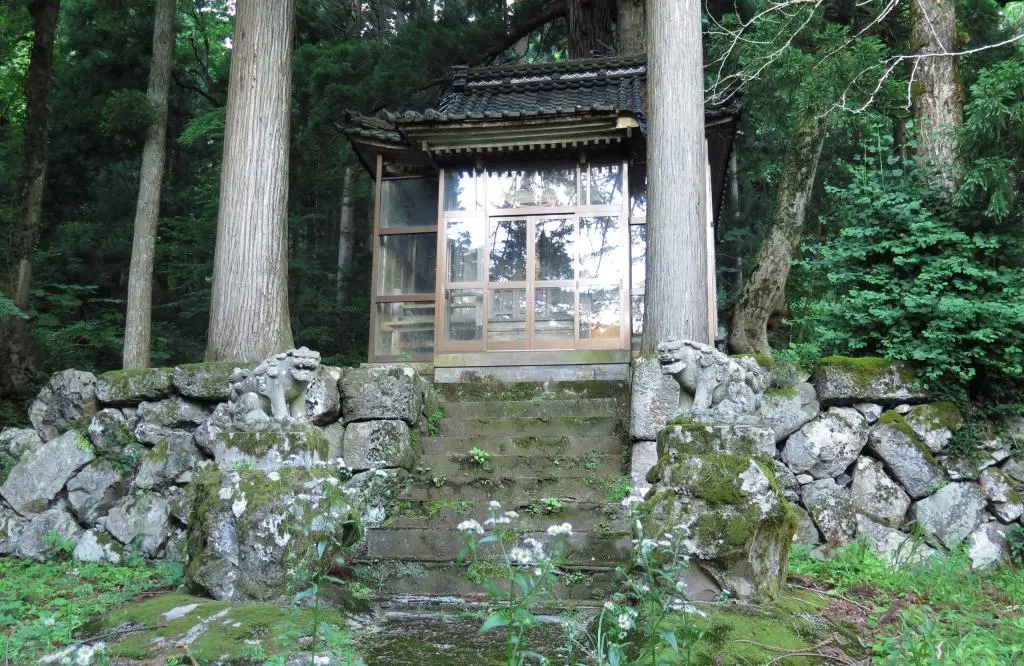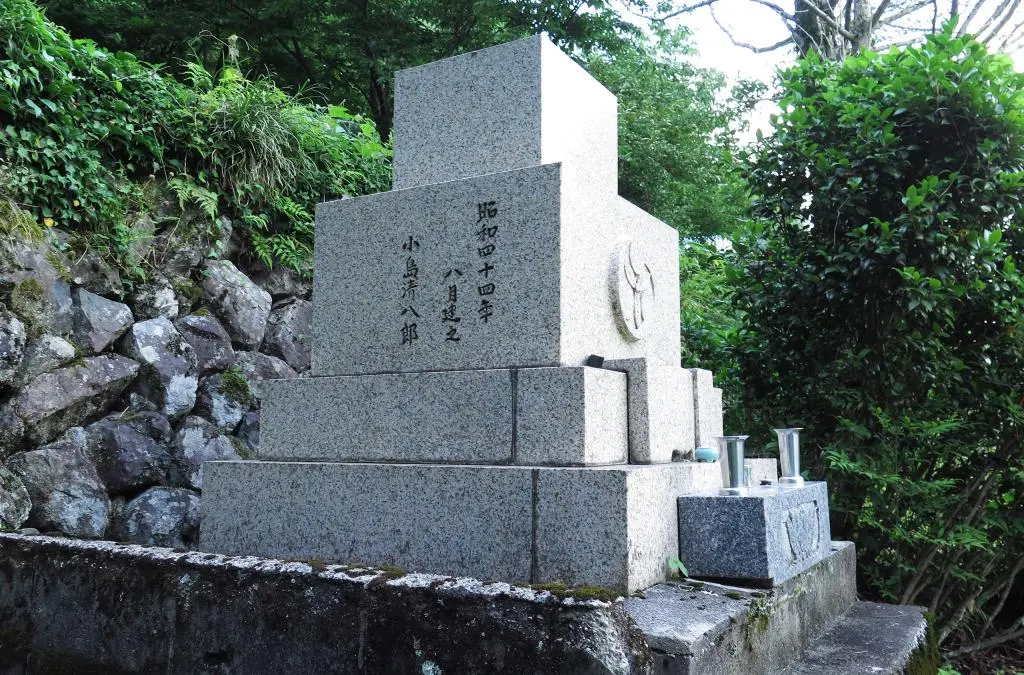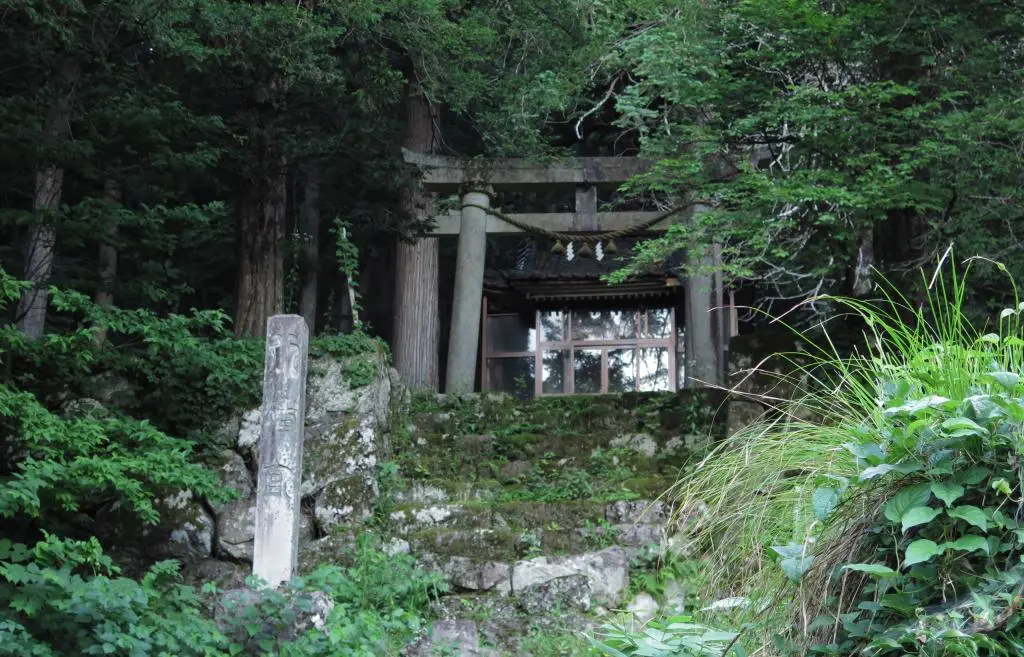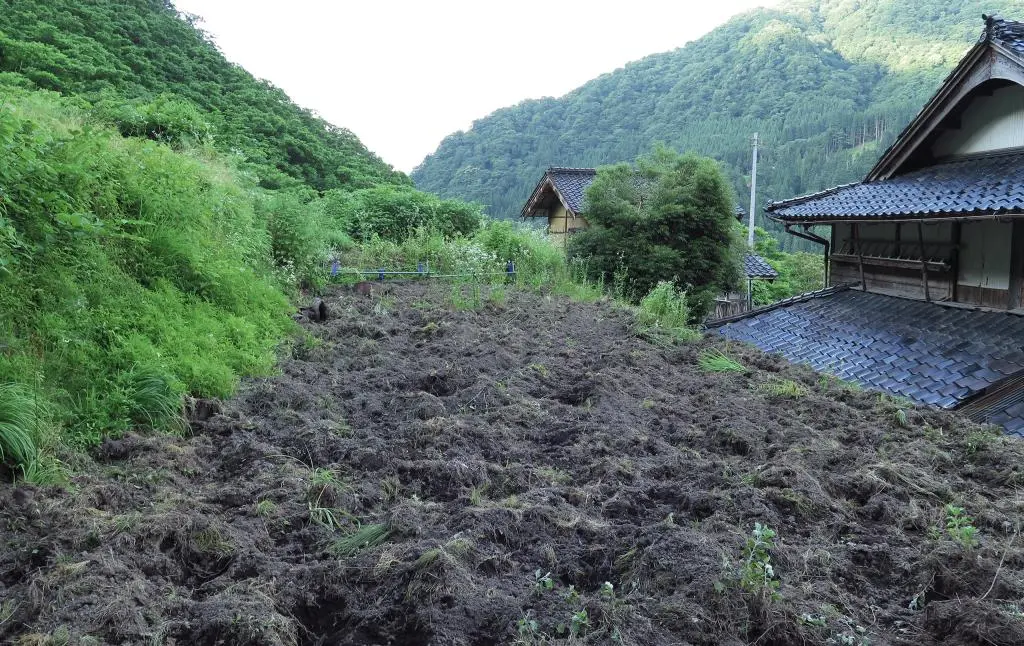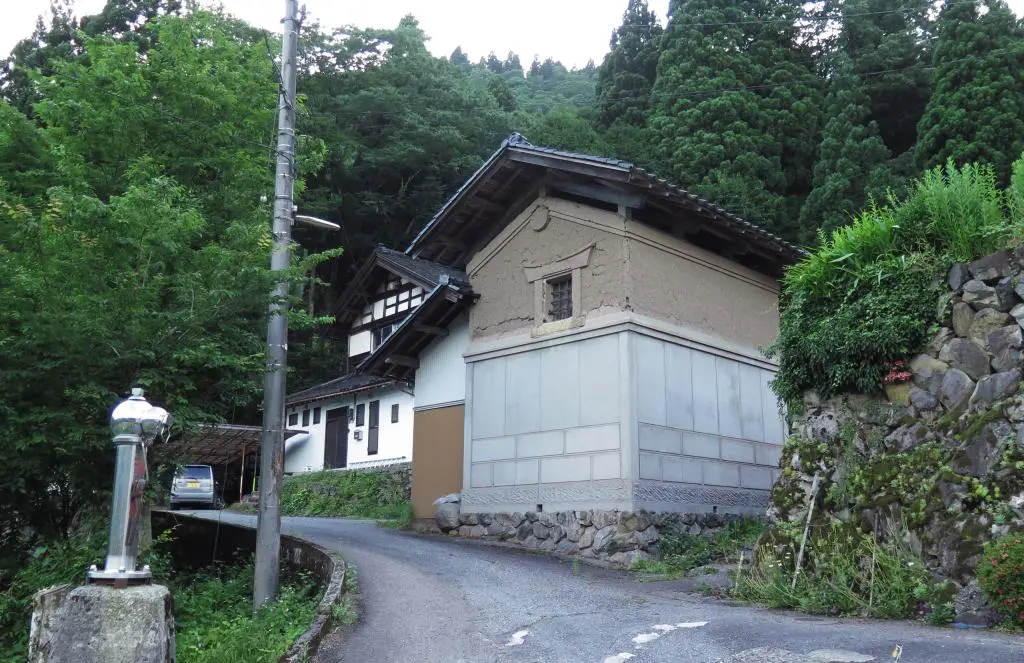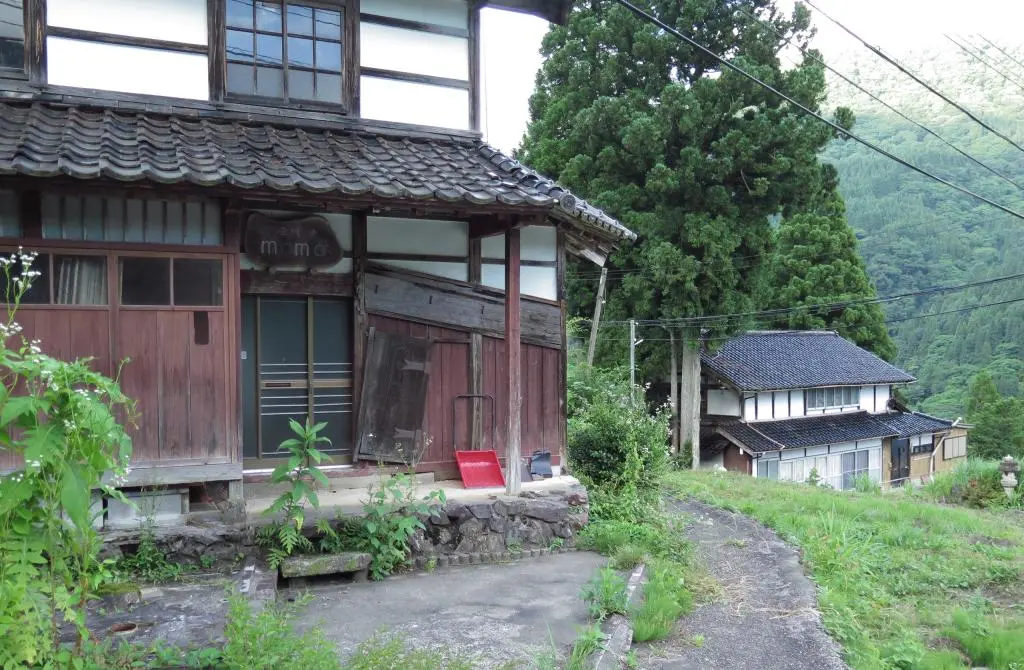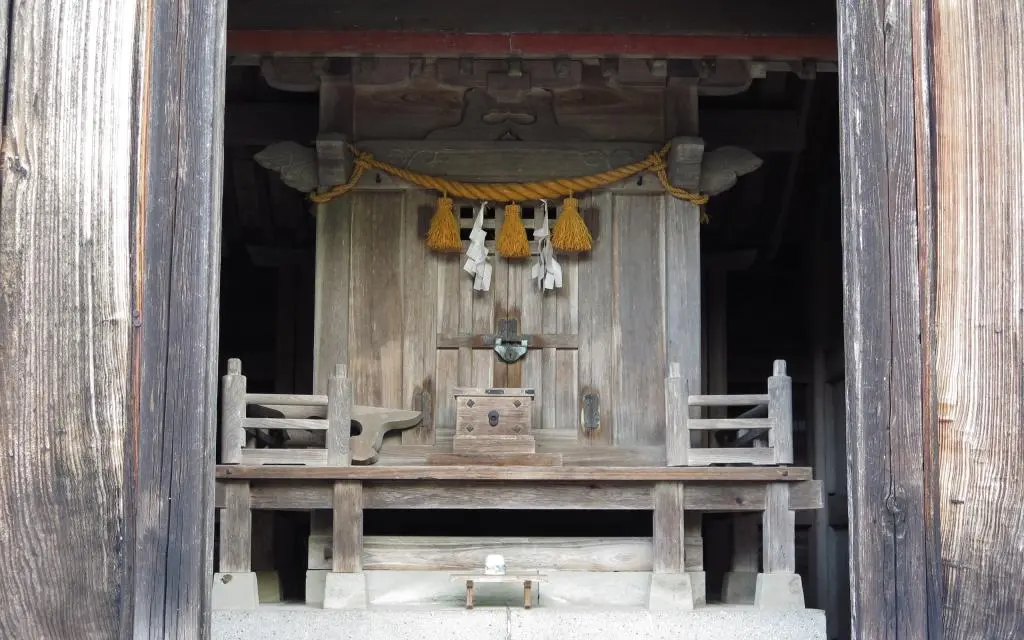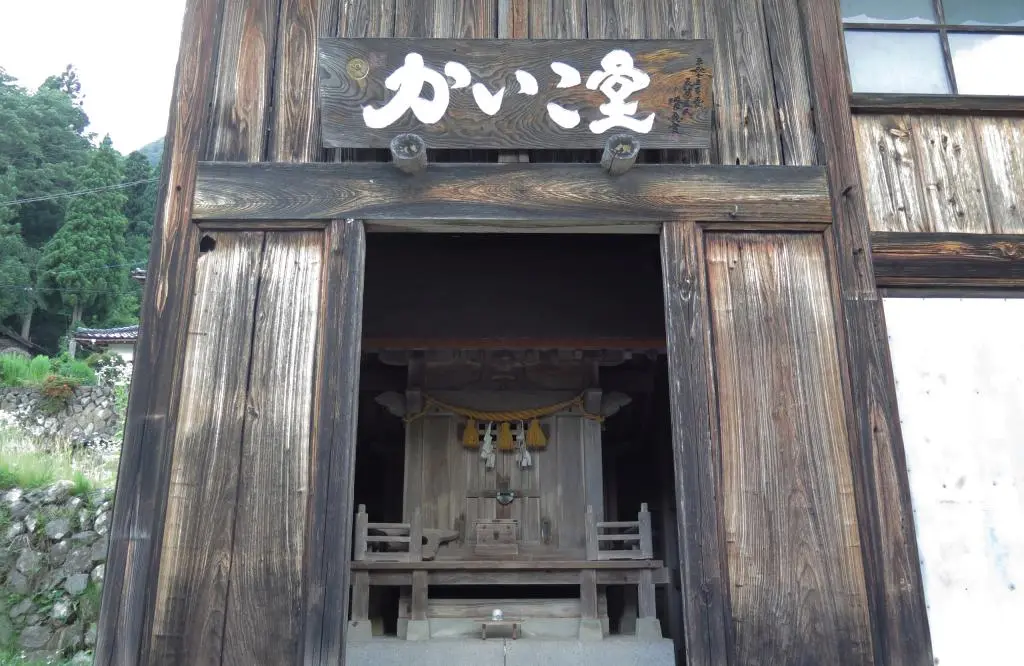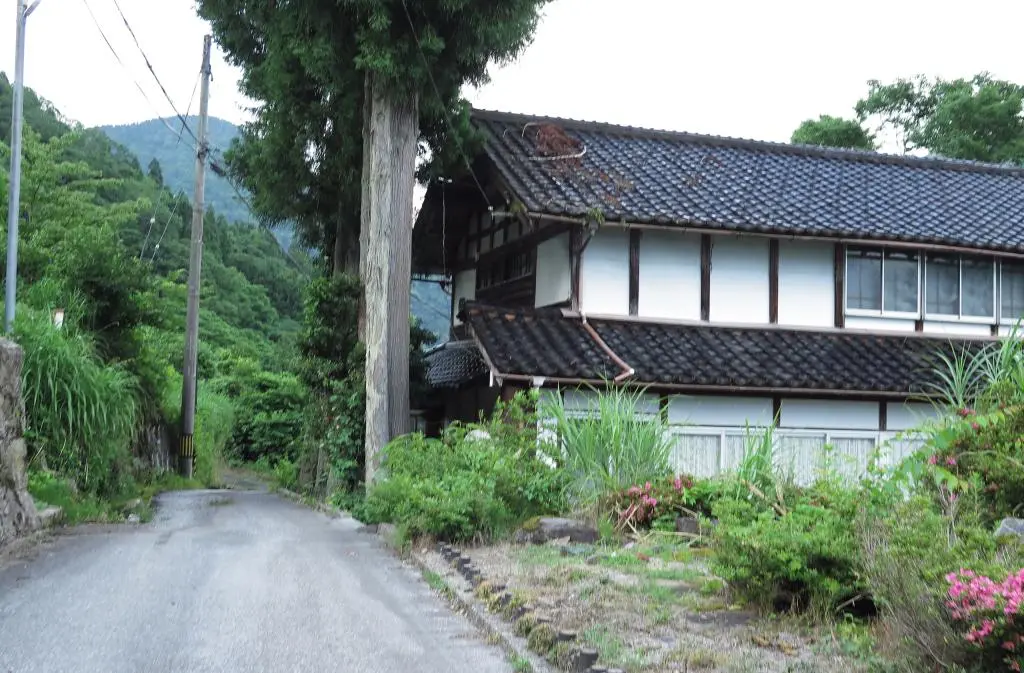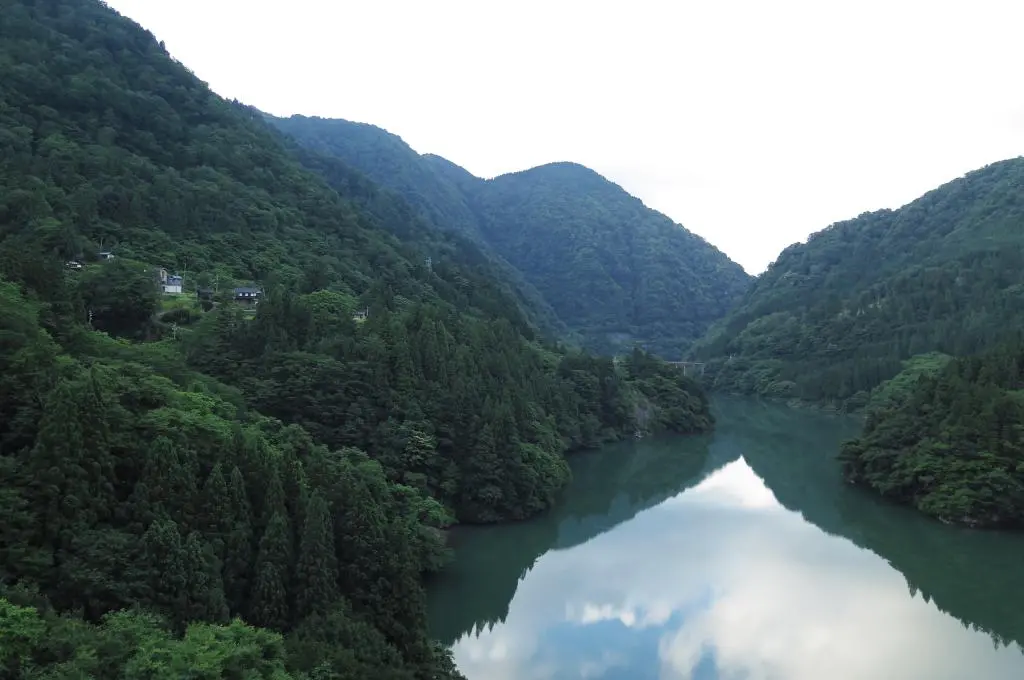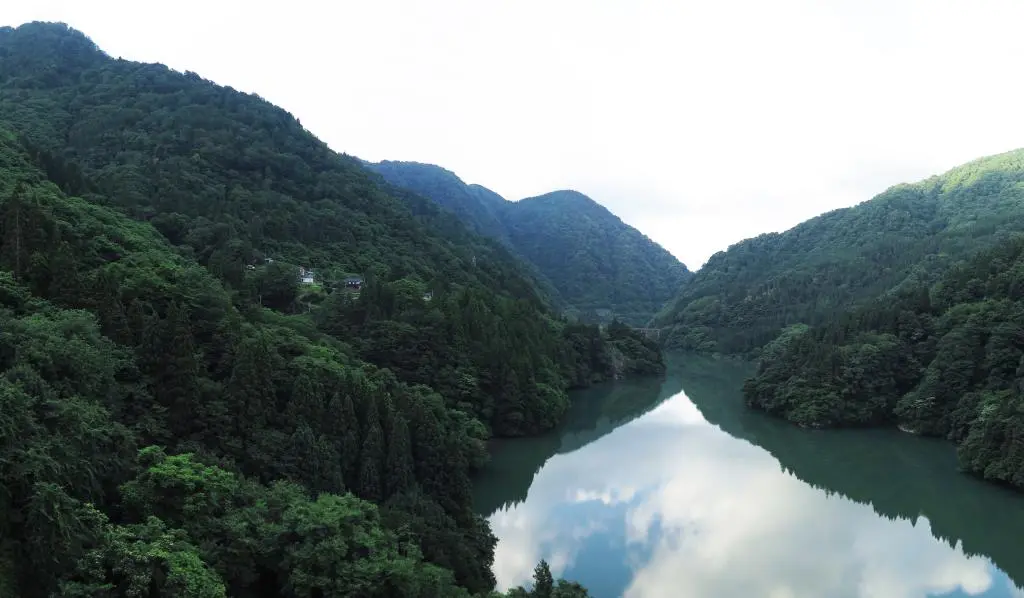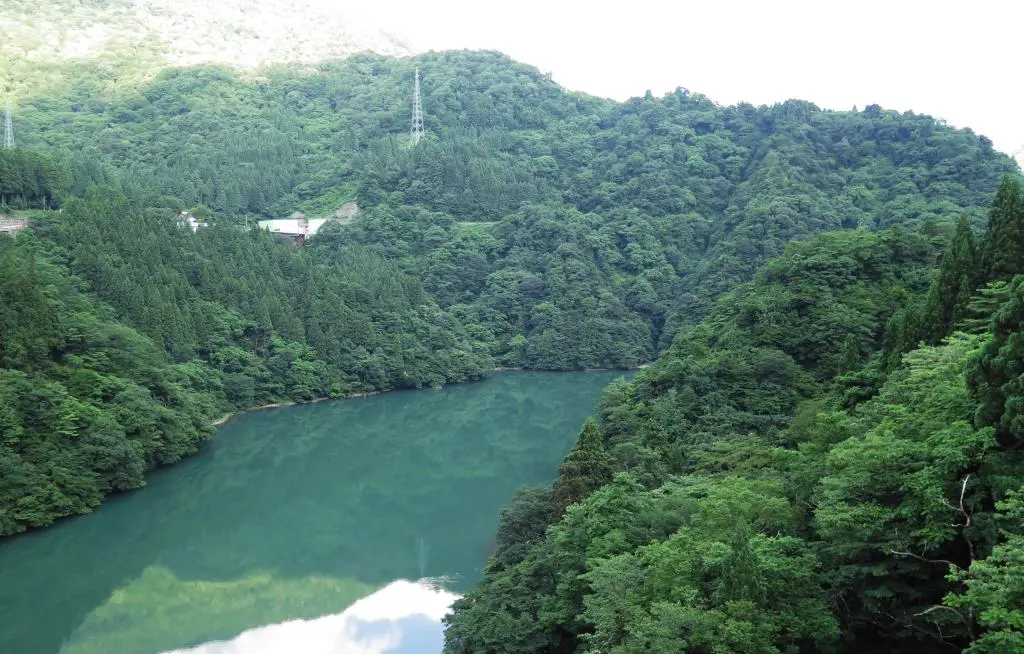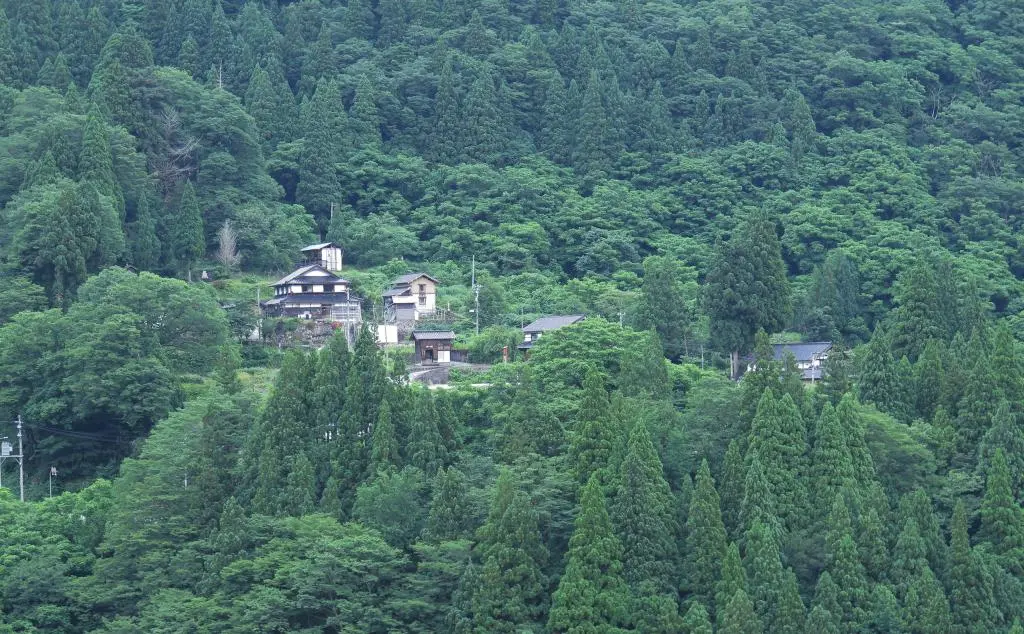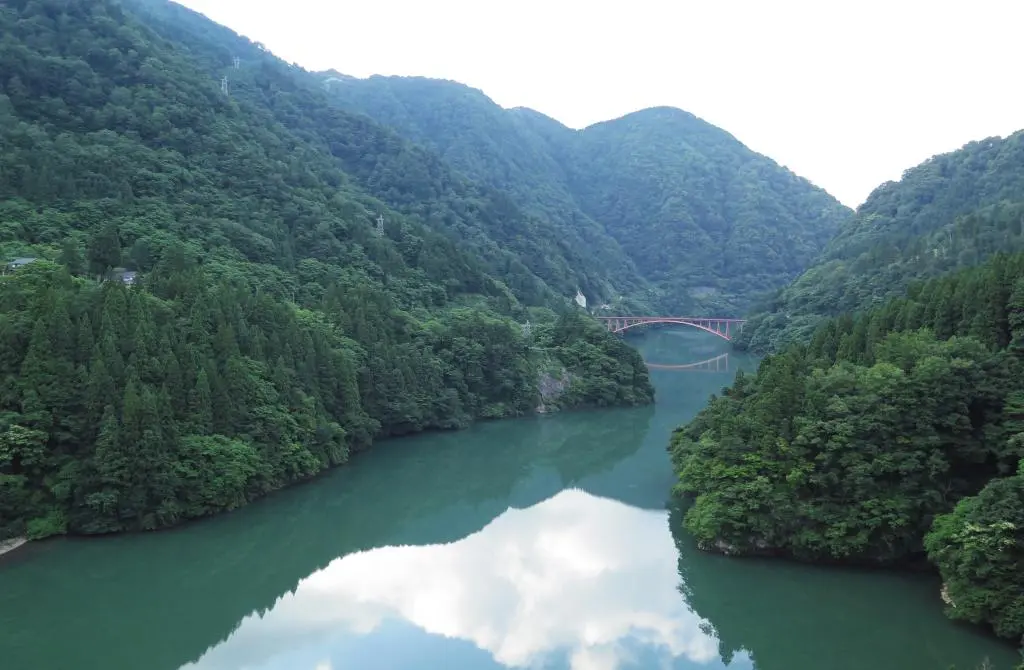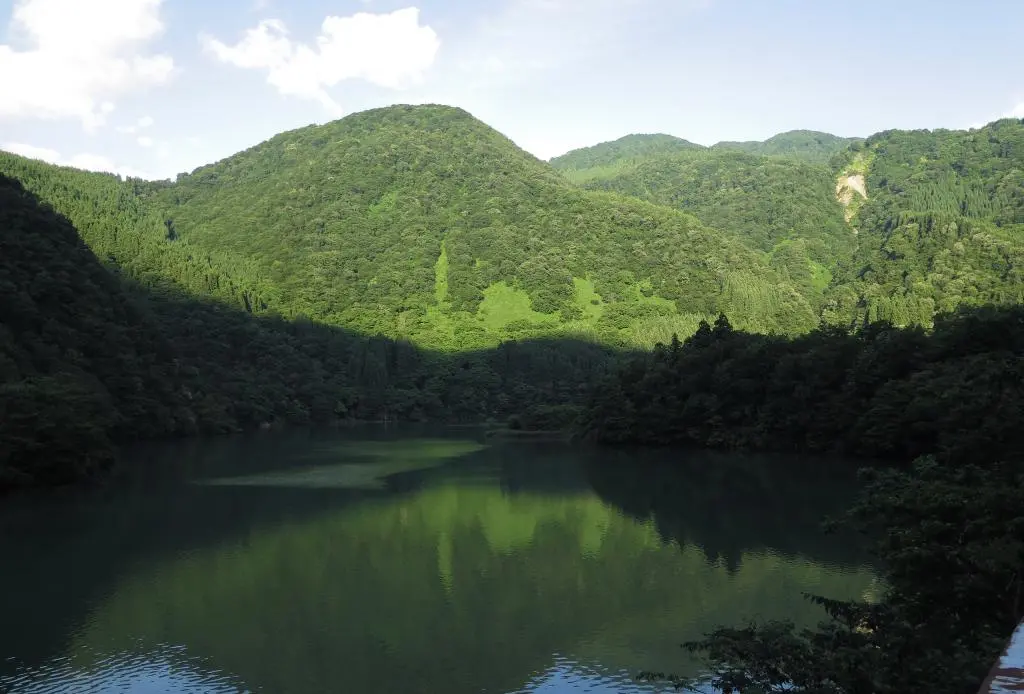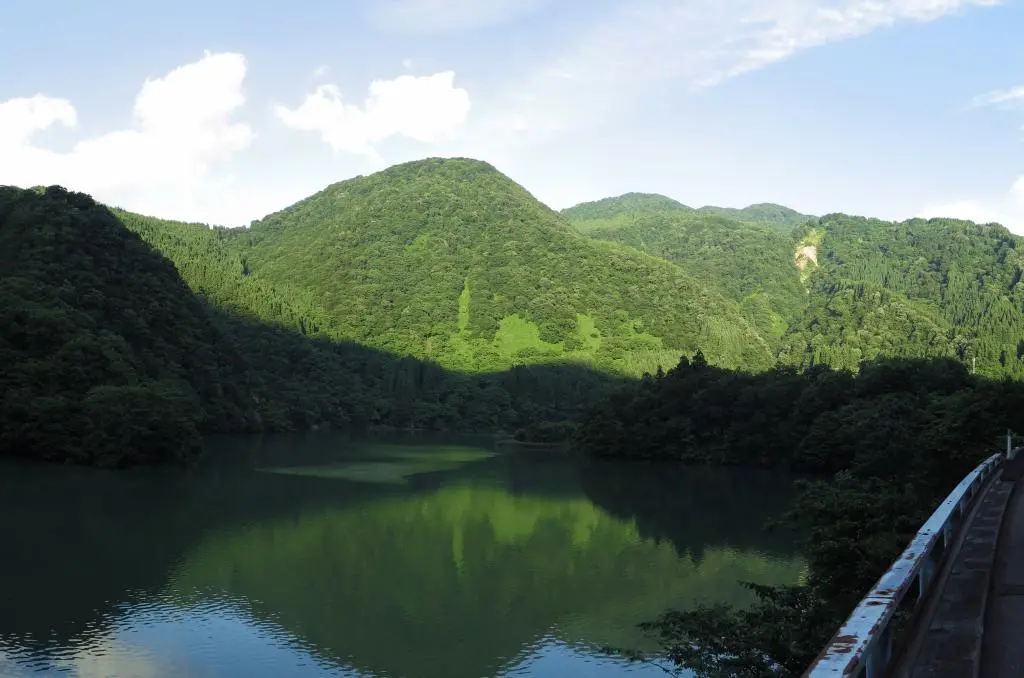Shimohara Village was a small village or settlement in the southwestern area of modern day Toyama Prefecture. It is one of the first villages along the Otani Valley, part of the five valleys of the area. After the village designations of the late 1800s, it became part of Toga Village, which is kinda weird, but maybe not.
The whole area of southwest Toyama is split into five major valleys. Toga Valley is the eastern-most one, with Otani Valley directly to the west. All of these valleys are very long and winding. Today, it takes about 30 minutes to reach the center of Toga Village from the valley base by car. It takes about 10 minutes from the same location to reach Shimohara going down the Otani valley.
I don't know how they expected these students to travel the distance back to the valley base and trek 3-times the distance up another valley to reach school each day.
Well, the government must've thought the same way because in 1935 昭和10 they built a branch school in the center of this village, titles Toga Element School - Shimohara Winter Branch School 利賀小学校下原冬季分校. Apparently, roads were established enough for students to make the trip outside of winter. When the school was built they were 16 students. Later in 1973 昭和48, it became an all-year branch school before closing in 1986 昭和61.
This was according to research done by Heyaneko. Much like other school buildings in the distant old villages of Toga Valley, some people began living in the building for a time. But, the building had been completely vacant for about 20 years.
Today, it's gone. Google Maps still shows the building being there, but it's using imagery from May 2024. So, it must've been demolished last year. Many of these old buildings used a lot of asbestos, so with no one maintaining them, they've become an incredible danger and must be removed.
I took some photos of the empty lot, and went up the hill to visit the village's shrine.
This is the Shimohara Hachiman Shrine 下原八幡宮. Hachiman Shrines are dedicated to the Shinto god Hachiman. He is apparently a god of archery and war, so he was a favorite god of many samurai. Many farmers and fisherman also pray to Hachiman for a bountiful harvest or a bountiful amount of fish in their nets.
This shrine was a bit unique as the Shishi Lion statues out front looked very stunted compared to ones I've seen at other shrines. Maybe these statues were the original ones from hundreds of years ago, never refreshed or reformed.
The shrine itself was protected by a wall of plexiglass surrounding the entire building. The front could be opened to enter, pray, and give your offering.
This small pocket of civilization seems pretty representative of the many villages that dot these valleys. People often refer to them as islands because of how isolated they can be. Shimohara is pretty representative of this as the walls of the valley are so steep there's really nothing around except for the next pocket village down the road 10 minutes or back up the road for 10 minutes.
It's obviously easy to travel to all these village today with the roads and tunnels carved out of the mountains. But these roads have only been established since after the war in the 60s and 70s. 100 years ago, people were probably only traveling to these villages by boat.
People still live in Shimohara today. There were four homes, and had their cars parked nearby. With the concrete school building gone, the area feels like its gotten closer to nature again.
